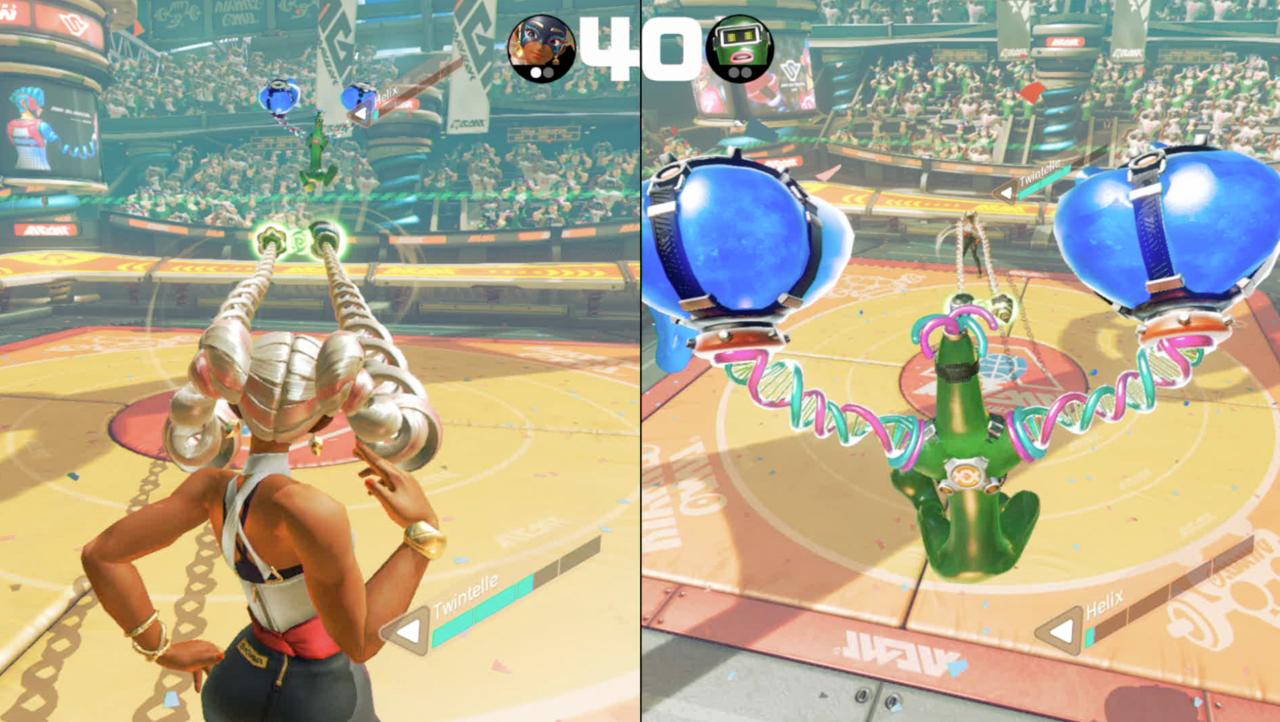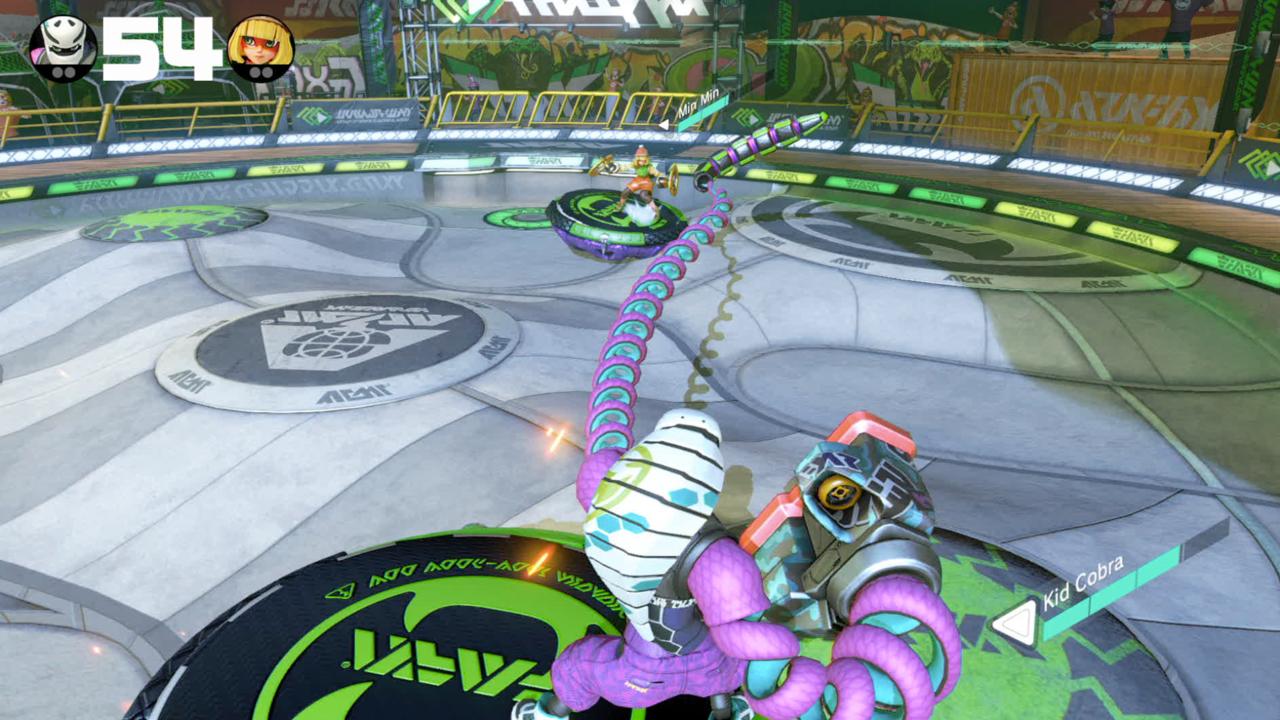Nintendo's upcoming limb-centric fighting game Arms is shaping up to be an entertaining competitive experience for the Switch. Its design is simple and intuitive, and excitement creeps in the moment you throw a punch and realize how capable you are. The fact that Arms' characters and environments are infectiously vibrant and cheery doesn't hurt either. While Arms seems like a simplistic brawler on the surface, its mechanics offer a subtle dose of nuance and complexity that makes it far deeper than it initially lets on.
Arms' intricacies are exhibited by the freedom you have to customize your fighter's arm configurations before each round. Before a fight begins, you're given the option to select from three different arms that are exclusive to each character (the full game will allow you to mix and match all signature gloves regardless of the fighter you choose). This opens up a wide range of combinations and strategies based on factors like weight, elemental attributes, and attack styles.

When playing as the ramen noodle-armed fighter Min Min, you can use her Dragon arm's stationary laser attack to hinder your opponent's movement, while simultaneously sending out charged-up jabs from your electric-powered Megawatt Arm to stun and dwindle their health. Or as the dancing green blob Helix, you can opt for two bouncing Blorb arms: one to limit your opponent's vertical mobility, and the other to damage and blind them. With each arm sporting a unique combat advantage, the ability to mix and match is one of Arms' major highlights as a fighting game thus far.
Adding to the complexity of battles are special abilities unique to each fighter. These offer distinct perks to a fighter's attacks or maneuverability options. For example, Helix's elastic body allows him to shrink and stretch at will, making it possible to dodge incoming attacks; on the other hand, Twintelle can slow down enemy attacks or herself in mid-air. These options imbue Arms' combat with an extra layer of strategy akin to fighter matchups from traditional fighting games. In a fight, a specific arm configuration could prove useful, but if you're not careful, it could be easily countered by an opponent's special ability. Case in point: Master Mummy's slow Megaton arms against Min Min's quick, attack deflecting kick ability.
Despite the varying intricacies of Arms' mechanics, the major concern over its viability as a balanced fighting game is the reliability of its motion controls; if their execution is inconsistent in practice, then none of that is going to matter in the long run. Unintentional punches and missteps aren't unheard of in Arms, and while this is excusable for casual players, anyone looking for serious competition will no doubt be dissuaded by mistakes outside of their control. It has been confirmed that the game is playable using traditional controller setups, but it's currently unclear how that will work in practice.

Whatever your initial reaction to the game's appearance was, Arms isn't just about about flailing about like a crazy person to win--though you're welcome to try (and lose). Rather, it's about carefully considering which arms to use during a round and how they can be leveraged to defeat your opponent. The motion controls may prevent it from becoming a mainstay of the fighting game community, but its mechanics seem to offer a solid framework that makes it far more involved than most motion-controlled games.





















